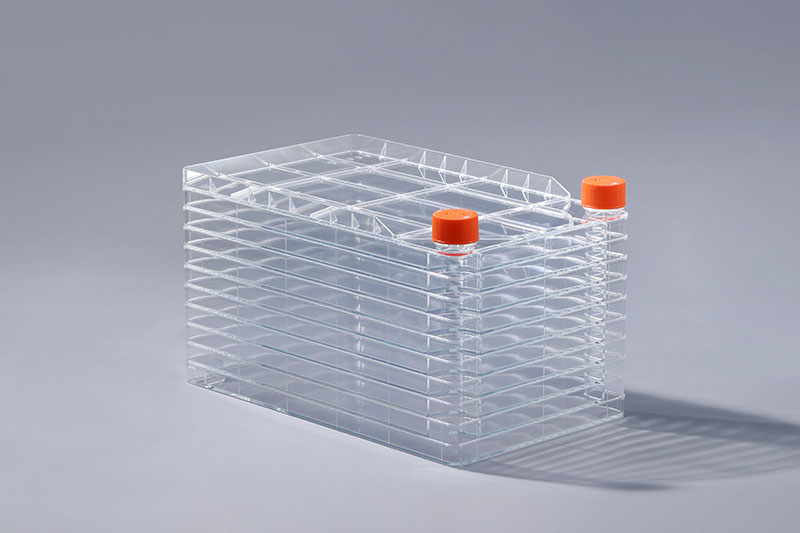Với sự cải tiến và hoàn thiện không ngừng của các kỹ thuật xử lý khác nhau, vật tư tiêu hao nuôi cấy tế bào từ các vật liệu polyme khác nhau ngày càng đóng vai trò quan trọng trong lĩnh vực nghiên cứu khoa học sự sống. A cell factory là vật liệu tiêu hao được làm bằng vật liệu polyme. Theo thông số kỹ thuật của nó, các kịch bản ứng dụng cũng khác nhau.
Nhà máy cell được làm từ nguyên liệu polystyrene (PS). Hiện nay quy cách trên thị trường gồm 1 lớp, 2 lớp, 5 lớp, 10 lớp, 40 lớp. Các sản phẩm dưới 10 lớp chủ yếu được sử dụng cho các tế bào phòng thí nghiệm nhỏ. Nó thường được sử dụng để thay thế các bình nuôi cấy tế bào, có thể tiết kiệm không gian, giảm ô nhiễm và thuận tiện cho hoạt động. các lĩnh vực, đặc biệt là công nghiệp sản xuất vắc xin. Các loại vắc xin được biết hiện nay có thể sản xuất bằng loại tiêu hao này bao gồm vắc xin viêm não Nhật Bản, vắc xin rubella, vắc xin sởi, vắc xin quai bị, vắc xin thủy đậu, vắc xin viêm gan A, vắc xin dại, vắc xin bại liệt, vắc xin rota, ... Điều đáng chú ý là kể từ khi có 10 - Vật tư tiêu hao lớp và 40 lớp nặng và khó vận hành bằng tay, các công cụ phụ trợ như máy nắn, máy lắc, tủ ấm, giá đỡ và xe đẩy được sử dụng để đảm bảo thuận tiện cho sản xuất. tình dục và an toàn.
Trên đây là các kịch bản ứng dụng tương ứng với các thông số kỹ thuật khác nhau của nhà máy tế bào. Dù áp dụng theo khía cạnh nào thì nhiệt độ, áp suất thẩm thấu, carbon dioxide, giá trị pH và yêu cầu về độ vô trùng đối với quá trình nuôi cấy tế bào là không thay đổi, đây cũng là những điều kiện cơ bản để tế bào phát triển.
The above are the application scenarios corresponding to different specifications of the cell factory. No matter which aspect is applied, the required temperature, osmotic pressure, carbon dioxide, pH value and sterility requirements for cell culture are unchanged, which are also the basic conditions for cell growth.
The FAI climbed 5.9 percent year-on-year in the first 11 months of 2018, quickening from the 5.7-percent growth in Jan-Oct, the National Bureau of Statistics (NBS) said Friday in an online statement.
The key indicator of investment, dubbed a major growth driver, hit the bottom in August and has since started to rebound steadily.
In the face of emerging economic challenges home and abroad, China has stepped up efforts to stabilize investment, in particular rolling out measures to motivate private investors and channel funds into infrastructure.
Friday's data showed private investment, accounting for more than 60 percent of the total FAI, expanded by a brisk 8.7 percent.
NBS spokesperson Mao Shengyong said funds into weak economic links registered rapid increases as investment in environmental protection and agriculture jumped 42 percent and 12.5 percent respectively, much faster than the average.
In breakdown, investment in high-tech and equipment manufacturing remained vigorous with 16.1-percent and 11.6-percent increases respectively in the first 11 months. Infrastructure investment gained 3.7 percent, staying flat. Investment in property development rose 9.7 percent, also unchanged.
 English
English



















































